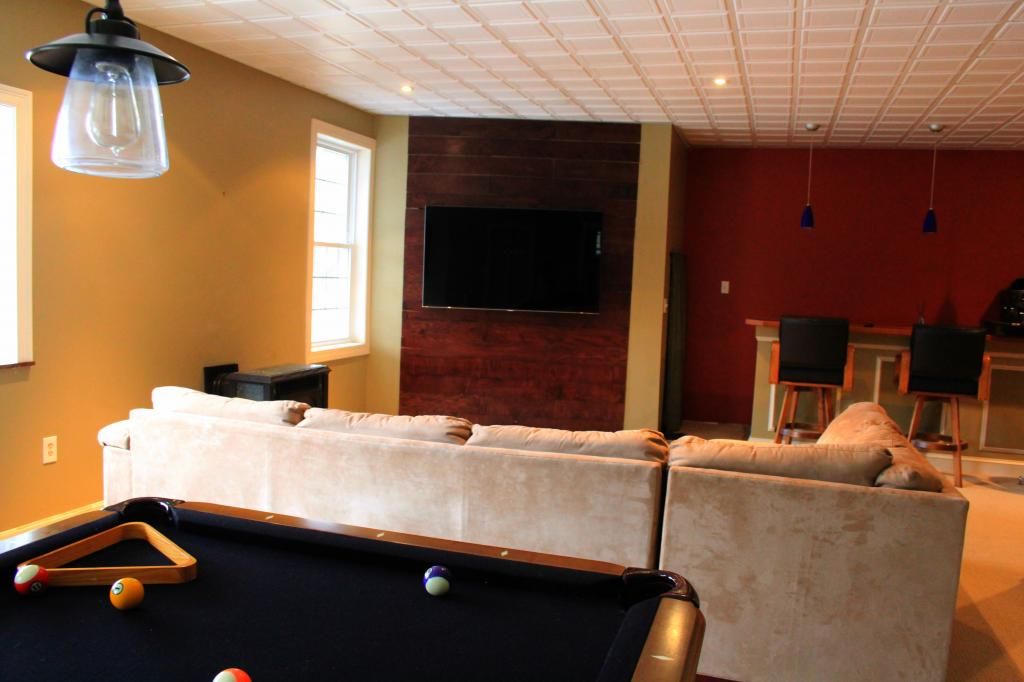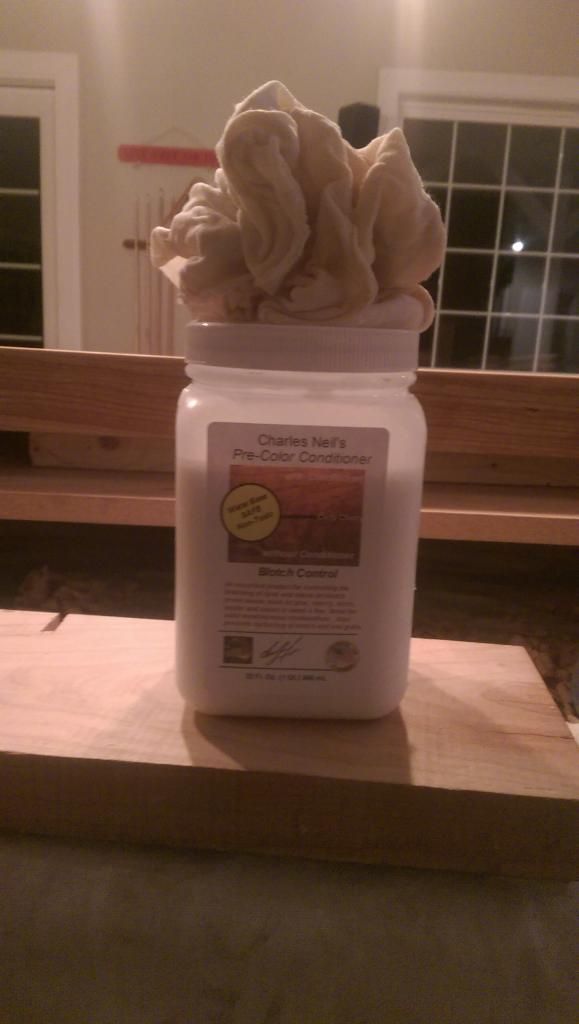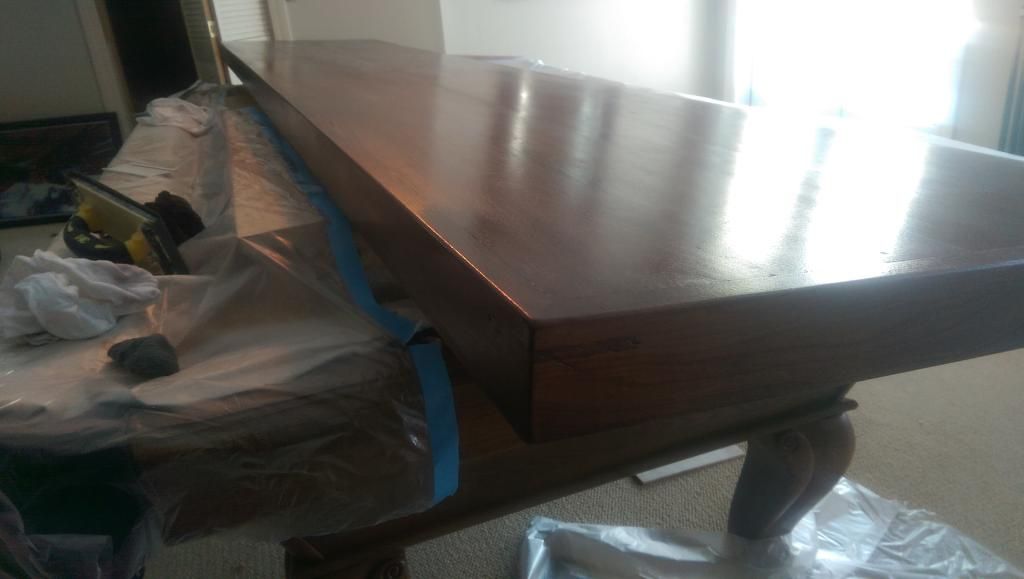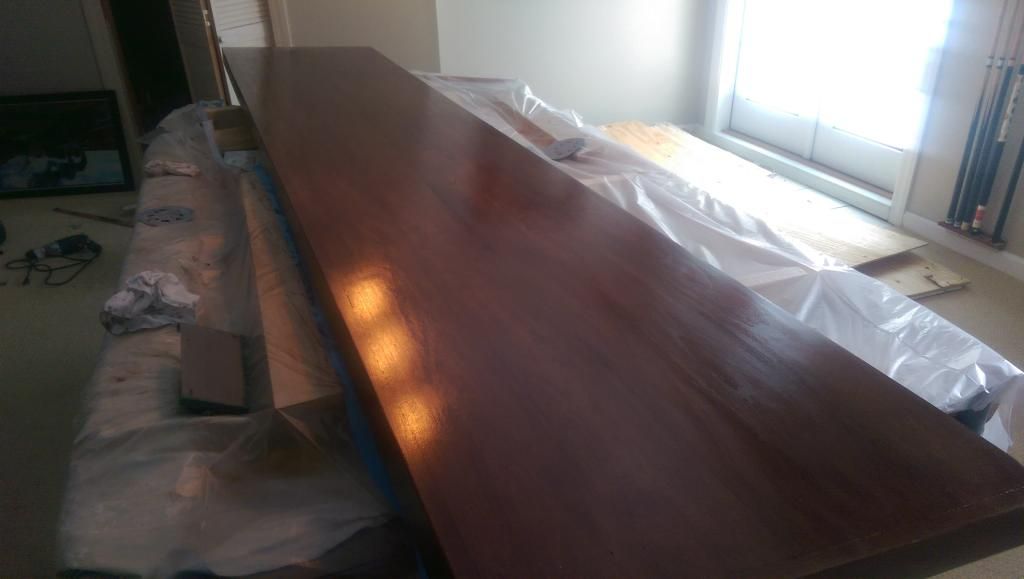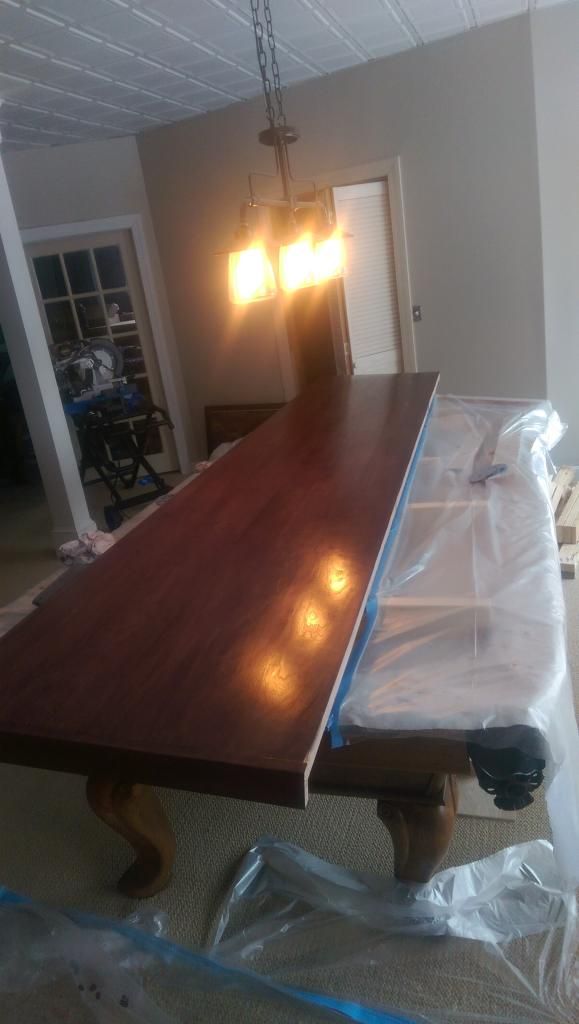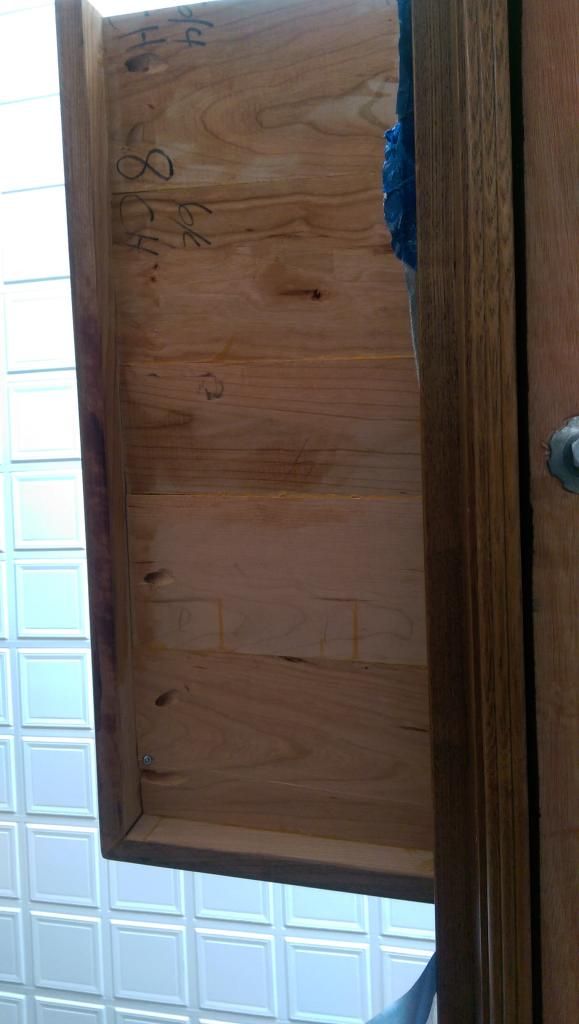And by "Very Large" I meant for a total greenhorn rookie like me.
I have to start off by saying that I completely love this site. The experience and knowledge is frankly so vast that it's hard to wrap your head around. I've been building up my capabilities on smaller projects and have recently been redoing our rather large finished basement. I call it my test lab as I can take a few more risks with projects down there than I would consider in the upper floors!
We recently ripped out a large terribly built and absurdly heinous bar and have been turning it into a more built in kitchenette type area. For the counter, I decided to go way above my skill level and build one out of hardwood. The dimensions are roughly 25" deep and 126" long. Luckily I live in New Hampshire and am close to a great lumber source, http://highlandhardwoods.com/
I had a few different wood species in mind but after looking through the current stock, ended up with S3S 6/4 Cherry boards. From past projects I know just how long they could be for me to fit in my SUV , phew!
As a budding woodworking enthusiast, I didn't have the proper tools to rip the unfinished edges and joint the boards properly. You will see that in fact this project was a great excuse to by alot of new equipment. I'm also using my poor pool table as my work table, but I promise no harm was done duering the making of this counter. First up was drinking the green cool aid and picking up a Festool TS55 and Mini Vac.
After making the straight cuts, I also procured a jack plane to begin leveling the boards with the hopes of a good glue up. I'm not a pro at grading wood and learned a lesson since one of the boards was pretty crooked. It took alot of time with the jack plane to get it close.
No another purchase was needed, a whole buncha clamps. Based on some reviews here, I picked up a bunch of cheapo's from Harbor Freight. I also grabbed a few from my local Rockler. Following additional advice from this board, I used Titebond 2 and did my first glue up with only 2 boards.
Then the rest all at once (of course 24 hours later to be safe).
The nice thing about the Festool vac is that with an adapter it hooked up nicely to my Rigid Random Orbital. Its such a treat to be able to work on things in the house with basically zero dust. After glue up, planing and sanding
Then I trimmed the edges and did a test fit. I like it, but the wife "suggested" it would look even better (dont you like how they frame it this way) if the edges were built up. Sooo.....I went out, and grabbed more Cherry. Now I'm no pro, and I'm sure you've figure that out by now having already seen close to 100 mistakes in this thread. I decided to rip it to 2.5" wide boards and glue them to the front and 2 sides with mitred *gasp* corners. I probably shouldn't have, but it seemed like a good idea at the time.
I first clamped and glued the front. Then I added the sides, but also added pocket screws to them.
Here it is being test fit
Terribly blury pic
Slightly less terrible pic
Before finishing I wanted to put some extra detail into it (which I really had no business doing). I love the look of mitre splines and read about ways I could add them in after everything had already been glued up. I decided to use some white oak and acquired a Mini Dozuki, a chisel and a prayer.
So last night I've started finishing and will update this further. It involves Charles Neils Blotch Control. I'm also afraid to mentioned that I did need to use tint on the cherry, as it hard to at least come close to matching another feature I did down there, which is a wood plank accent wall with a flat screen mounted to it. I know, and I've been hesitant to post such an atrocity :-/.



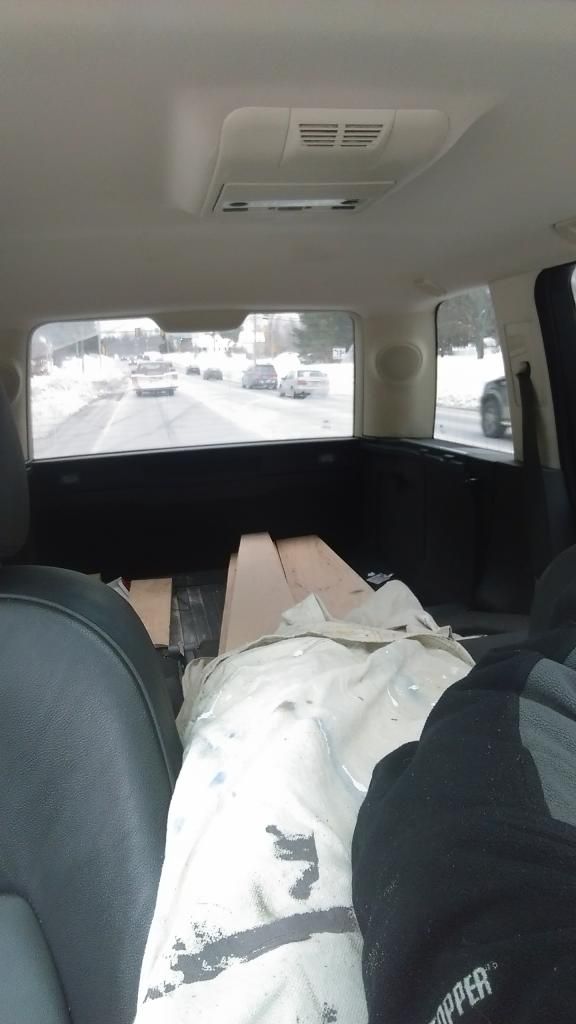
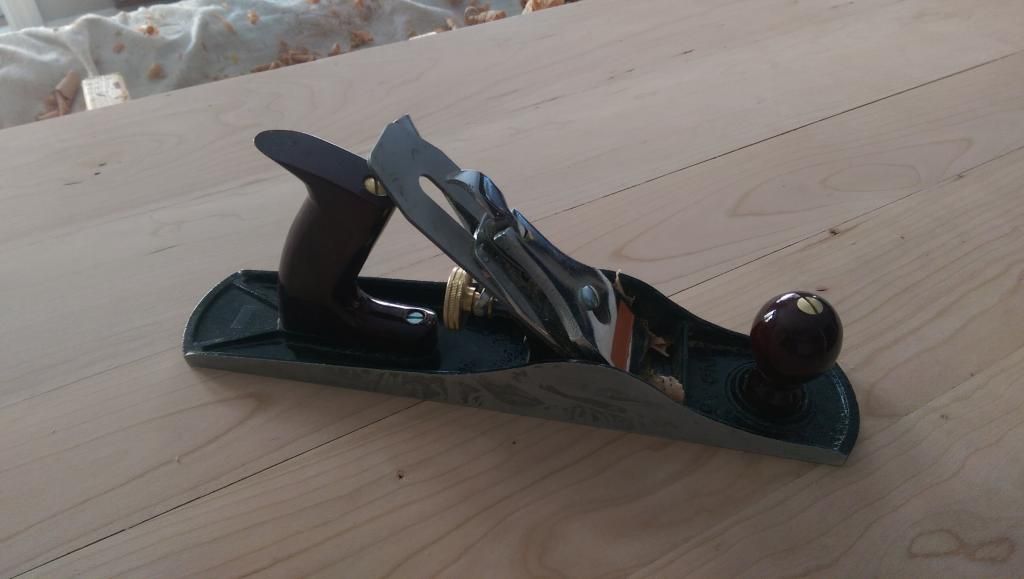
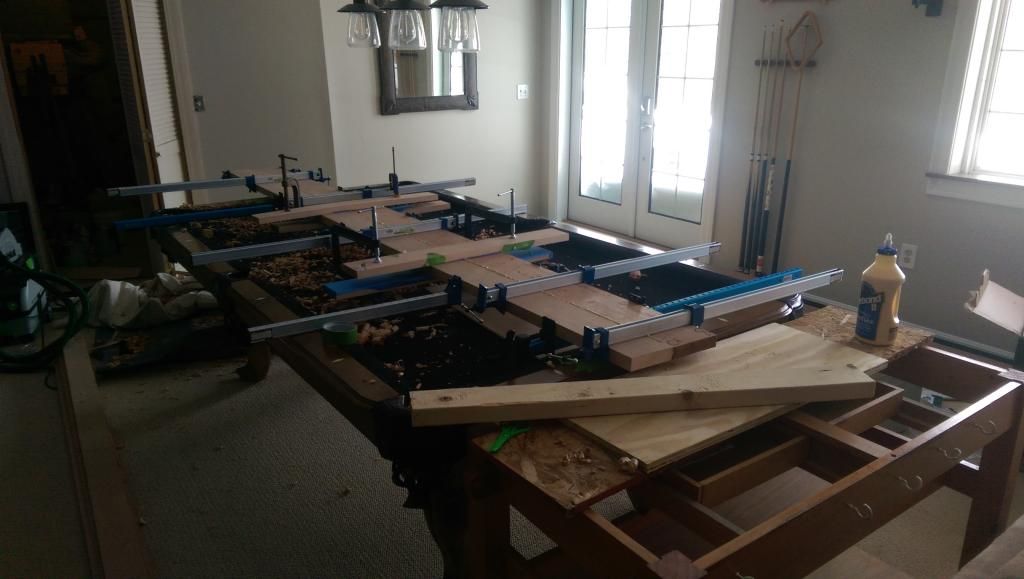
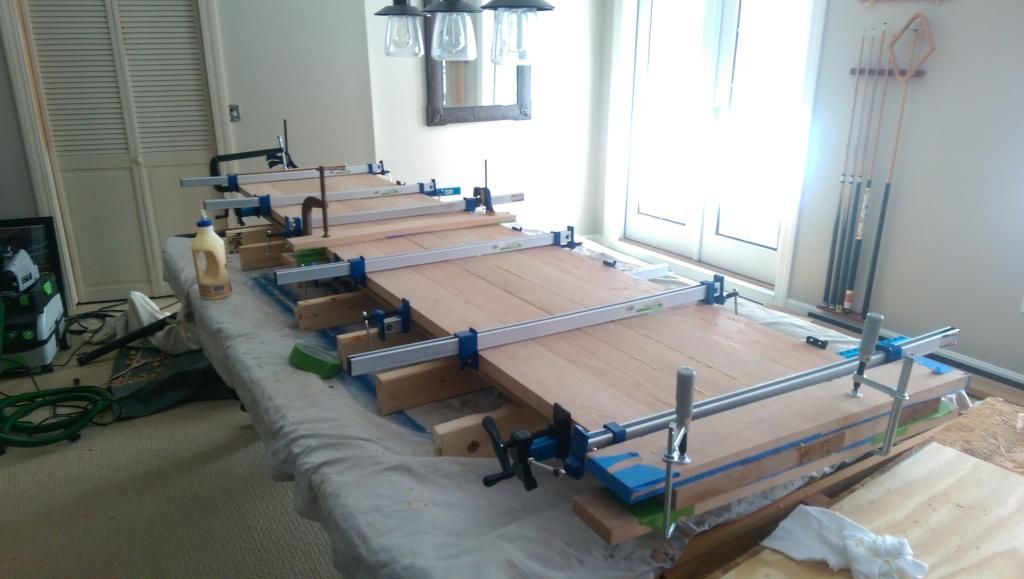
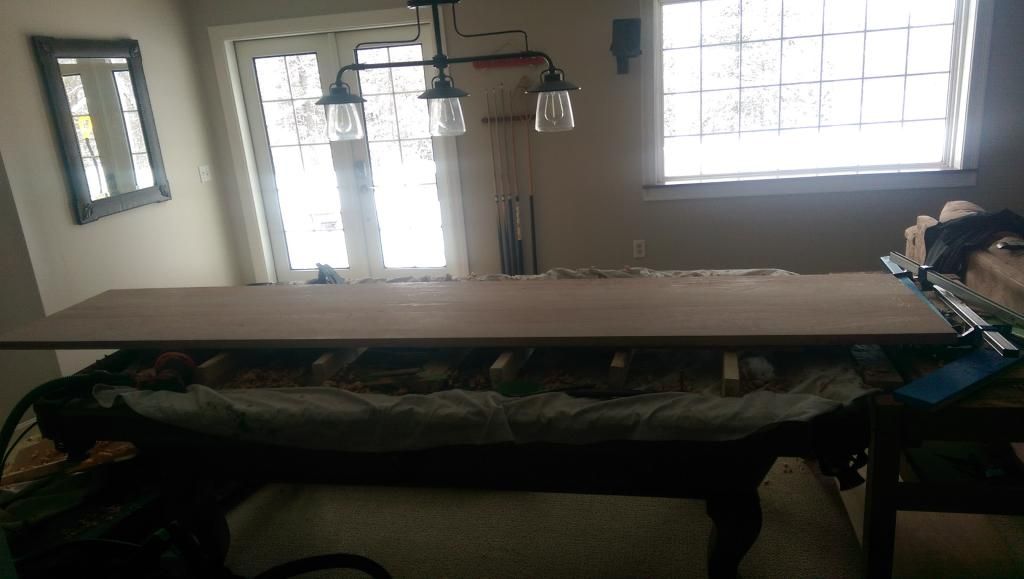
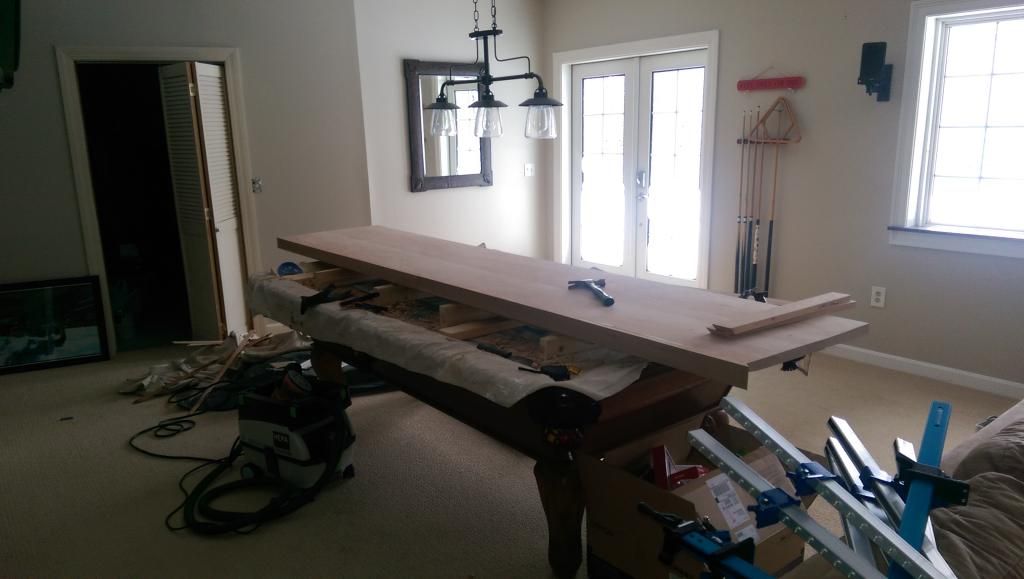
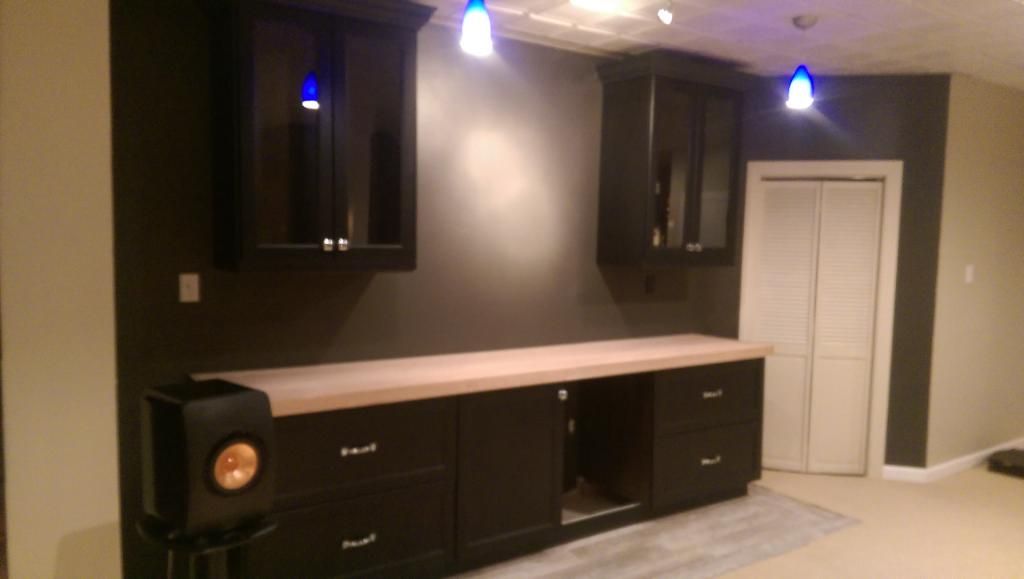
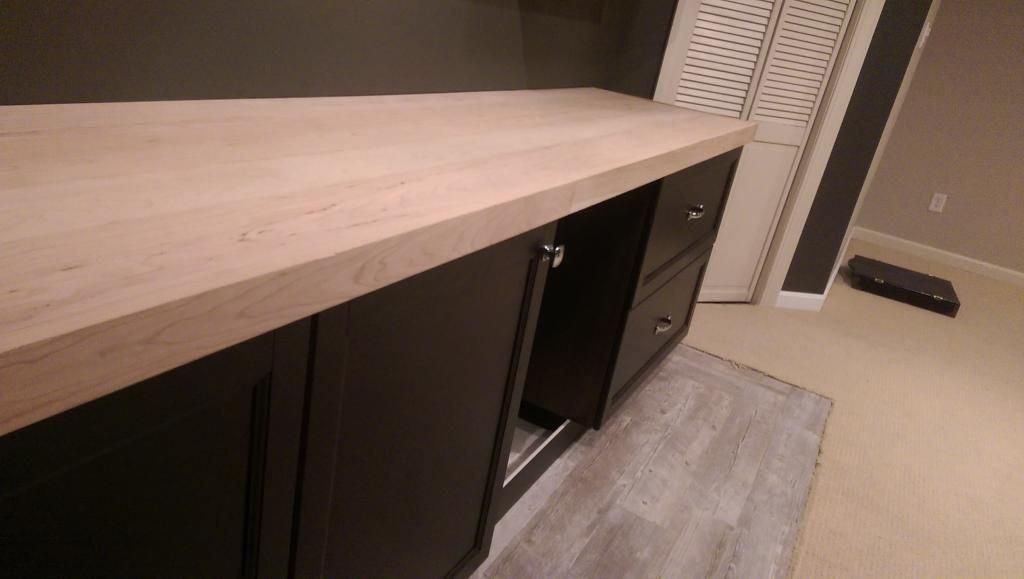
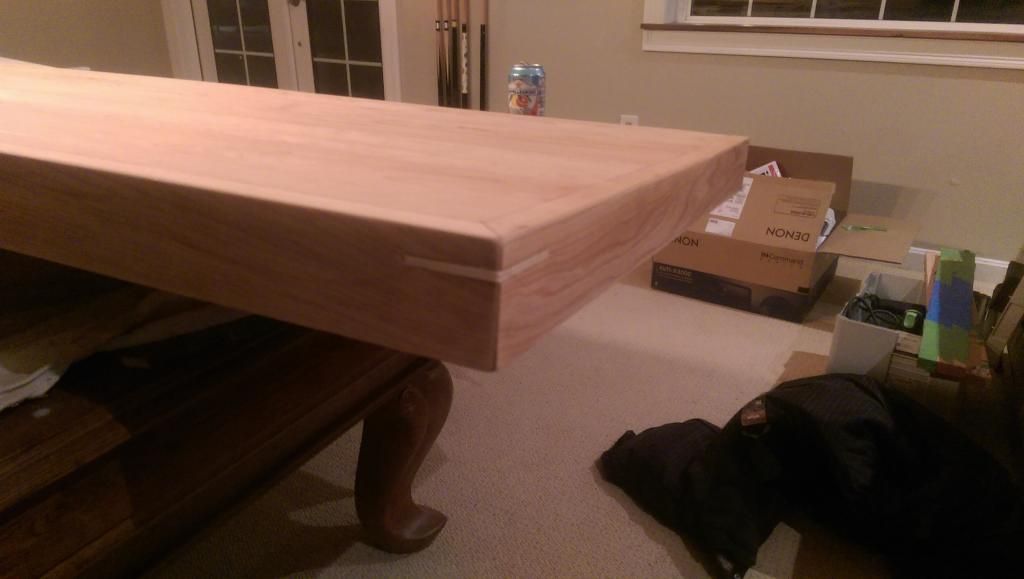

 Reply With Quote
Reply With Quote


